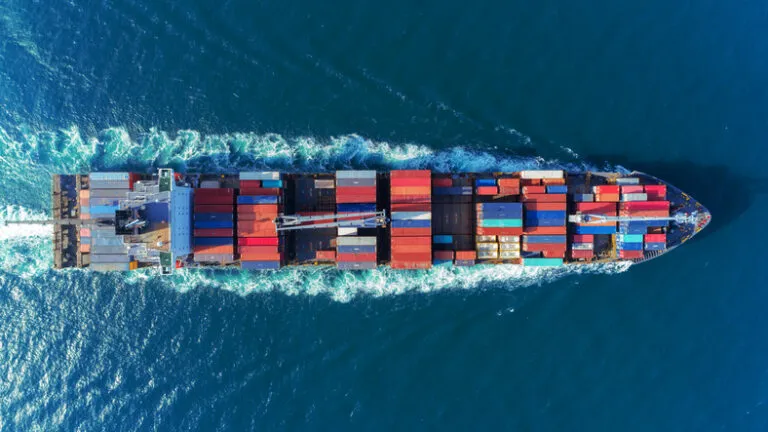An importing checklist might help your business. Accurate documentation plays a key role in all the steps of the process. There are different documents, in different steps, that demand careful analysis for those handling the importing procedures. It is fundamental to deeply master all the documents because it is an essential key to success for any business. Mistakes and incorrect information shall result in hard penalties, delays or even losses of products in Customs Facilities.
In this article we are going to show how some simple actions that your business needs to manage importing. These procedures shall cut to zero all the operational failures that delay and add extra costs to the trade.
IMPORTING CHECKLIST – ALL THE STEPS
Importing must be split into four steps:
1) Administrative Diagnosis
2) Logistics Planning
3) Operational Monitoring
4) Operational Execution
The first step is the Administrative Diagnosis that takes place before the cargo is shipped and if possible, it should happen even before the deal is closed. It is considered the most relevant phase because it is the moment when all the implications in this operation are disclosed. This step is exactly when it is known whether the importer shall have technical and financial conditions to meet all the requirements for the operation. And finally the importer must be extremely careful in five pivotal points:
1) Identification of NCM (Mercosur Common Nomenclature)
2) Administrative Treatment Analysis
3) Tax Burden Analysis
4) Selection and Validation of the Supplier
5) Payment of the Supplier
Identifying NCM is the first (and foremost) step since it enables the identification of a relevant number of requests demanded in the process such as previous license and registrations. However, what else do we have to observe in order to avoid mistakes and penalties in importing?
PRE-SHIPMENT INSPECTION
Pre-shipment or logistics planning are all the steps required so that the importing is shipped on the scheduled date having all customs duties fulfilled. And then the analysis and approval of documents take place.

The operational department of your company must check every requested document and also identify whether it complies with the requirements. It is estimated that roughly 54% of procedures end up delayed due to incorrect information in the importing documents. The worst scenario takes place whenever the importer is not fully aware of the documents demanded by the Customs Authority. It is fundamental to thoroughly examine all the documents and that includes relevant dates and legal aspects. To proceed the shipment in case the documents are incomplete or do not comply with the requirements might cause inconvenience (and penalties). It is only possible to receive the documents issued by the exporter if and when your company previously sends the Bill of Lading.
SHIPPING INSTRUCTIONS
This is not a Customs Document and therefore, many companies ignore such document. However, it is the most important guide if your company is willing to get 100% right regarding the documents. Brazil has a strict control over importing and that is valid for documents as well. As for importing, we are requested to present the original document and it must have been signed by the right representative. Besides, we must include the taxpayer number (CPF in Brazil) in one of the documents. In case this request is not fulfilled, the penalty will cost $5.000,00 BRL (Five Thousand Brazilian Reais).
Without a complete guide, it is not possible for the exporter to be aware of all requests.
THE MAIN DOCUMENTS FOR IMPORTING
In all cases, every importing procedure requests the following documents:
1) Commercial Invoice
2) Packing List
3) Bill of Lading
Depending on the type of the product or the origin, additional documents shall also be requested:
1) Certificate of Origin
2) Certificate of Analysis
3) Phytosanitary Certificate
4) Pest Control Certificate
Each one of these documents above have unique characteristics that shall demand the importer be extra careful. Legal penalties are extremely tough in case one of the documents is not presented. And the same is true in case there are mistakes or typos. The most common mistakes, on the other hand, are incorrect filling, lack of information, no signature and when the original documents are not sent. Here is a guide to avoid such mistakes.
DOCUMENTS FOR IMPORTING: THE RELEVANCE OF A CHECKLIST
The best definition of a checklist is to do well the procedures. Those who work with importing are aware that no one should trust solely in the memory. Our memory eventually fails. However, the biggest challenge for many foreign trade professionals is not to have a routine to analyze several documents.
Therefore, a checklist is a list of items previously established to certify what must be carefully analyzed in this document. All the steps and items of the list must be in compliance with the customs legislation. The checklist, one of the most relevant tools in quality control programs, enables anyone to analyze and approve all the requested documents.
The most important step in a importing checklist is to develop a set of checklists that are suitable for all requested documents that shall guide your company to check all the details related to boarding. Our Comexblog has a set of 05 importing checklists.
Therefore, we apply internal controls that are the result of many meetings, adaptations and improved details. After many years of experience and operational practice combined with a huge number of customers and thousands of processes with incredible results.
Here is a list of what your company is able to control
– Pro Forma Invoice Checklist
– Commercial Invoice Checklist
– Packing List Checklist
– Bill of Lading Checklist
– Shipping Instructions Checklist
Further information is found here
It is free and your company will have a complete and comprehensive guide with all the steps for the routine documents.


